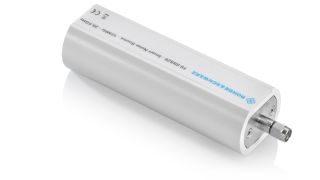Hauptmerkmale
- Frequenzbereich bis 18 GHz, 26 GHz, 40 GHz, 55 GHz, 67 GHz, 90 GHz oder 110 GHz
- Unterstützung durch die R&S®FSW, R&S®FSV/A3000, R&S®FPS, R&S®FPL1000 Signal- und Spektrumanalysatoren, den R&S®FSWP Phasenrausch- und VCO-Messplatz, den R&S®FSMR3000 Messempfänger sowie den R&S®ZNL Netzwerkanalysator
- Automatisches Laden der ENR-Tabelle
- ENR-Unsicherheits- und Reflexionsfaktortabelle zur automatischen Berechnung der Unsicherheit
- Automatische Temperaturanzeige für eine höhere Genauigkeit















